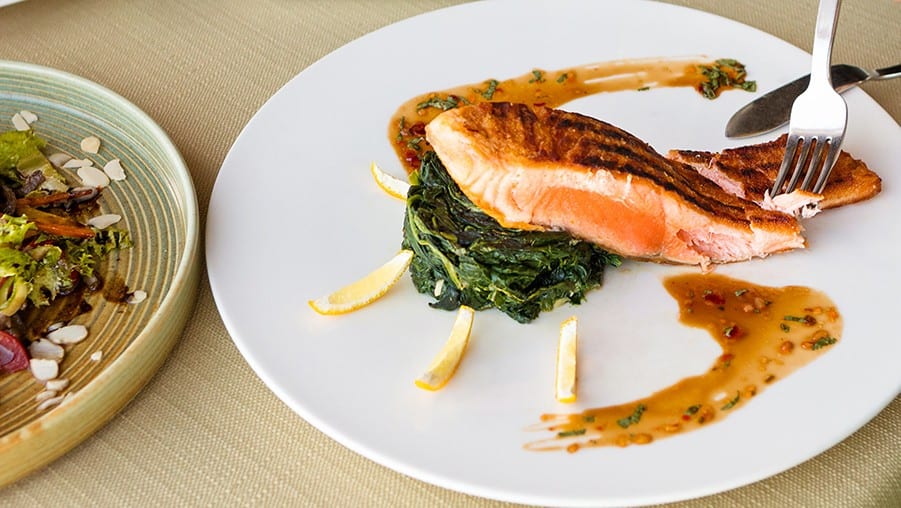
What’s A Portion?
As a whole, Australians have terrible eating habits.
High energy foods such as meat pies, sausage rolls, chicken schnitties and takeaway foods are considered weekly meal staples, and a whopping 35% of the average adult’s energy consumption comes from junk and processed food. But even worse than this? National food intake data tells us that only 5.4% of Australian children aged 2-18 years meet the daily recommended serves of vegetables!
Only 7% of Australian adults actually reach their daily vegetable intake requirements, yet they manage to consume 3 kg of food every day. 51% of us don’t eat enough fruit, yet 46% of Aussies manage to exceed daily sugar intake recommendations.
It’s no wonder that 63% of Australian adults are obese. Clearly, Australians need to reevaluate what they’re eating – and how much of it!
Free Foods, Healthy Fats, Carbohydrates and Protein
What’s what and how much of it should you be eating? Let’s take a look!
Free Foods (aka salad and veg!)
A free food is anything that contains less than 5g of carbohydrates and is below 20 calories per serve. But this doesn’t mean they’re low in nutritional value!
Most of your fruit and veg is considered a free food – think leafy greens, bright reds and oranges, and anything white, brown, blue or purple! The exceptions to this are your vegetables with higher carbohydrate or starchy content such as sweet potato, pumpkin, potato and corn.
Free foods should take up half your plate and if possible come in at least 3 different colours (to ensure you get a good range of nutrients and phytochemicals). Of course, this can get a little hard to achieve and prepare every meal, so start by aiming for at least two!
Free foods to get on you plate include:
- Red capsicum, tomato, chilli, strawberries, raspberries
- Carrot, oranges
- Yellow capsicum, mango
- Beetroot, blueberries, radish, plums, eggplants, olives
- Broccoli, spinach, kale, beans, peas
- Mushrooms, dates, bananas, ginger
Low Gi Carbohydrates
Ah, carbs. The more you have, the more you want. But really, these guys should only take up one quarter of your plate and be low GI and wholegrain where applicable. Carbs are essential in the body as they contain glucose which is converted into energy.
Low GI Carbohydrates can be found in a range of vegetables, whole grains, lentils and legumes. Depending on what you’re eating, sometimes it can get a little hard to know exactly what’s on your plate. If you’re eating a pasta dish or a curry with rice, try serving each element individually so you get a clearer idea of what’s going onto your plate.
If you’re trying to lose weight or gain muscle and swapping carbs out for protein, here’s a quick hot tip – DON’T DO IT! Protein and carbs have the same calorie content per gram, but very different (and important roles) in the body.
Low Gi carbohydrates to get on your plate include:
- Wholegrain pastas and noodles, quinoa, wholegrain bread, brown rice
- Corn, sweet potato
- Legumes, lentils, beans
Protein (just keep it lean!)
The remaining quarter of your plate should be dedicated to lean protein. If you’re a meat eater, make sure you opt for lean cuts each meal. There’s a big nutritional difference between a lovely, trim pork tenderloin and crispy pork belly! If you aren’t sure how to tell what’s a lean cut, just ask your butcher – they’ll point you in the right direction.
Lean proteins to try:
- Skinless chicken and turkey breast
- Oily fish such as salmon and tuna
- White fish and other seafood
- Leans cuts of beef, lamb, pork
- Tempeh
- Tofu
- Eggs
- Legume and lentils
Fatten up your plate with some healthy fats
No – eating fat does not make you fat! Of course, like anything, when not eaten in moderation excessive consumption of healthy fats can lead to weight gain. If you’re not burning the calories, they’ve got nowhere else to go!
Healthy fats is an essential macronutrient needed by the boy to help absorb and move vitamins around the body, reduce inflammation in the body, create hormones, reduce risk of heart disease and protect our organs (among other things!).
So, to ensure you keep your body healthy and you stay fuelled, add 1-2 tablespoons of healthy fats to every meal.
Note: if your source of protein contains healthy fats already, there’s no need to add additional fats to your meal. Common proteins that contain enough healthy fats include salmon, tuna, barramundi, cheese and eggs.
Healthy fats you can add to your meals are:
- Avocado
- Nuts, such as almonds, walnuts, cashews, macadamias and pistachios
- Seeds including chia, pumpkin and sunflower
- Full fat greek yoghurt
- Ground flaxseed
- Olives
- Olive and coconut oil, used in either cooking or as a dressing
And Finally… Check Your Plate!
Ok, so we’ve solved the first problem of portioning, and we now know how much of everything we should be adding to our plates. But how big, exactly, should a plate be?
Your plates outer rim should be no bigger than 25 cm, and you should leave a gap of about 3 cm between the outer rim of your plate and your food.
If you’re serving in a bowl, portion your protein first. The amount you serve should be about the same size as your palm. Once you’ve plate your protein, add the same amount of low GI carbs, and double the amount of free foods. To serve, pop your healthy fats on top!
